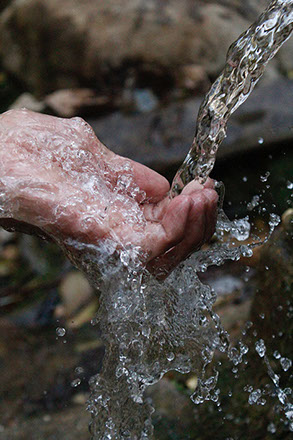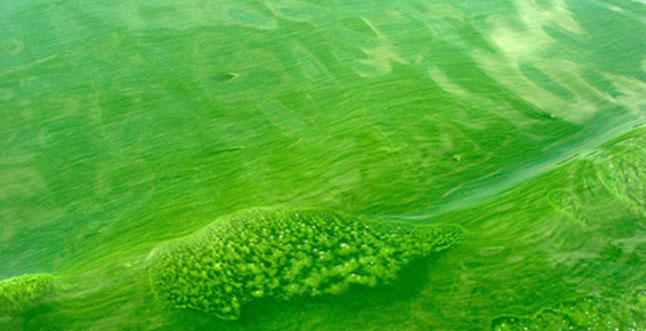Ann Arbor Weighs Options for Cleanup of Massive Dioxane Plume
Washtenaw County Circuit Court heard arguments last week from the City of Ann Arbor and Gelman Sciences regarding the cleanup of a large 1,4-dioxane plume underneath the city. In preparation for further hearings scheduled for May 2021, the Ann Arbor City Council voted unanimously to extend the contract with their retained law firm, bringing the City’s legal bill to $750,000. This is the most recent expense in a decades-long attempt to contend with the underground pollution, including an allocated $40,000 for in-home monitoring of potentially contaminated residences last year.
The plume’s origin can be traced back to Gelman’s 1960’s manufacturing of micro-porous filters and subsequent waste disposal practices. Production of these filters, ironically designed for detection of air and water pollution, gave way to the consequent “Gelman Plume”, ...


U.S. EPA Clean Water Act Center of Attention in Supreme Court Decision
The U.S. Clean Water Act was passed initially as the Federal Water Pollution Control Act in 1948. The U.S. Environmental Protection Agency (EPA) reorganized and expanded the Act in 1972 when it officially became the Clean Water Act (CWA). The CWA establishes the “basic structure for regulating discharge of pollutants” into U.S. waters and the quality standards of surface waters. If an individual or organization wants to discharge a pollutant from a “point source into navigable waters,” they first need a permit. These point sources include pipes and manmade ditches.
Recently, the Supreme Court (SCOTUS) ruled in a 6-3 vote that the “discharge of polluted water into the ground, rather directly into nearby waterways, does not relieve an industry of complying” ...
Nothing (New) to See Here… California State Guidance on Vapor Intrusion Consistent with 2015 US EPA Policy
The California Department of Toxic Substances Control (DTSC) recently released for public comment the Supplemental Guidance: Screening and Evaluating Vapor Intrusion (referred to as the Supplemental VI Guidance). This draft guidance supplements previous guidance, including the widely referenced 2011 DTSC Final Guidance for the Evaluation & Mitigation of Subsurface Vapor Intrusion to Indoor Air.
A few people in the industry have suggested that the guidance includes major changes to California’s vapor intrusion practices. We say their alarmist reviews are much ado about nothing, as many of the recommendations within the Supplemental VI Guidance simply follow the USEPA guidance...

.jpg?crc=491278273)
Supporting Local Foster Care
The staff of 212 Environmental and our families attended the 2019 Hamilton County Adoption and Foster Care Services holiday party in December to benefit area kids in foster care. We were thrilled with Travina Adams and the staff from Hamilton County. We had such a meaningful experience that we wanted to share why we chose them as a charity to support this year and why we will be back again next year. Our hope is that others will join with us in supporting their efforts as well.
When we set out to choose a charity, we decided we wanted something that was going to have a direct impact on our local community, and we wanted to know that our donations would be used responsibly. We did not want to simply drop off a check. These are likely common goals for small businesses looking to partner with charities...
Newark Water Crisis Eerily Similar to Flint
Mention Flint, Michigan and the first thing that will come to mind is the water crisis that escalated in 2015. According to a team of researchers from Virginia Tech University, an estimated 40 percent of homes in Flint have elevated levels of lead. The researchers reported that Flint water was 19 times “more corrosive” than Detroit. A state of emergency was declared at the end of 2015.
Jump forward four years, and it appears that another water crisis is building in Newark, New Jersey. In January 2019, monitors in Newark’s drinking water found that lead had reached the “highest level ever recorded in the past 17 years.” It’s the fourth time in a row that testing has found rising lead levels, while the 90th percentile of the samples...


Gone in a Blaze of Glory
Spring is synonymous with two things, baseball and rain. And while April’s rain brings May’s flowers, it can be an unwelcome guest at the ballpark. Rainy weather and wet fields ruin the fun for kids and little leagues across the country, canceling practices and games. String a few rainouts together, and an entire season could be washed away.
Two small communities were in the news recently for trying to prevent a wet field from ruining a couple of youth baseball games. Coaches and league administrators took it upon themselves to attempt a creative, although not well conceived plan to dry their saturated infields. Brett Molina, a reporter from USA Today, described what happened next:
Toxic Blue-Green Fatal to Dogs
While a stagnant blue-green pond may not seem like an attractive swimming hole to most people, to dogs, it’s just another way to beat the heat. Unfortunately, what the dogs and many of their owners don’t realize is the blue-green algae bloom found on the surface of those ponds can be fatal to animals.
According to multiple news sources, water contaminated with blue-green algae has been blamed for the deaths of multiple dogs across the country, including North Carolina, Texas, Minnesota and Colorado. The sight and the smell of the water tends to turn humans away, but dogs will lap up the water, or can be exposed through dried up toxic algae on the shore of the pond. The symptoms within pets include seizures, foaming at the mouth, skin rashes, neurological problems, liver and kidney problems, paralysis, and death. One dog owner said her pet collapsed after getting out of the water, dying an hour later at a veterinarian’s clinic.


Abandoned Dry Cleaners Site Poses Vapor Intrusion Threat to Residents of Bellevue, Nebraska
In the first part of 2020, the United States Environmental Protection Agency (USEPA) notified 125 property owners in the town of Bellevue, Nebraska of groundwater contamination that could be sending harmful vapors into their homes and businesses. The notification was prompted by the investigation of a former dry-cleaning business that operated from 1988 to 1992. Bellevue, the oldest town west of the Missouri River, is home to a population of 50,000 people, as well as Strategic Air Command and U.S. Strategic Command.
While in business, the dry cleaner generated an estimated 4,000 and 18,000 pounds of waste tetrachlorethylene (PCE), a dry-cleaning chemical, and its byproduct trichloroethylene (TCE). Short-term exposure to this colorless...
Copyright 2021 | All Rights Reserved | 212 Environmental Consulting, LLC. | The Historic Adam Riddle House | 2021 Auburn Avenue | Cincinnati, OH 45219
CLIENT PORTAL - Developed by Little Me DesignsIT


.png?crc=4233992406)